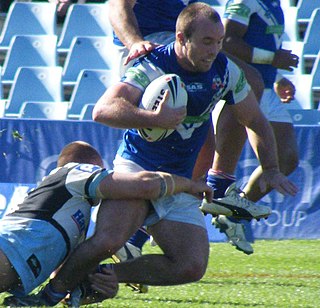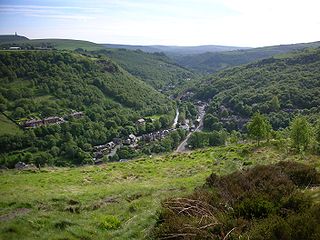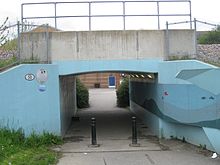
Yorkshire and the Humber is one of nine official regions of England at the first level of ITL for statistical purposes. The population in 2021 was 5,480,774 with its largest settlements being Leeds, Sheffield, Bradford, Hull, and York.

West Yorkshire is a metropolitan and ceremonial county in the Yorkshire and the Humber region of England. It borders North Yorkshire to the north and east, South Yorkshire and Derbyshire to the south, Greater Manchester to the south-west, and Lancashire to the west. The city of Leeds is the largest settlement.

Castleford is a town within the City of Wakefield district, West Yorkshire, England. It had a population of 45,106 at a 2021 population estimate. Historically in the West Riding of Yorkshire, to the north of the town centre the River Calder joins the River Aire and the Aire and Calder Navigation. It is located north east of Wakefield, north of Pontefract and south east of Leeds. Castleford is the largest town in the Wakefield district after Wakefield itself.

The River Aire is a major river in Yorkshire, England, 92 miles (148 km) in length. Part of the river below Leeds is canalised, and is known as the Aire and Calder Navigation.

Wakefield is a cathedral city in West Yorkshire, England located on the River Calder. The city had a population of 109,766 in the 2021 census, up from 99,251 in the 2011 census. The city is the administrative centre of the wider Metropolitan Borough of Wakefield, which had a 2022 population of 357,729, the 26th most populous district in England. It is part of the West Yorkshire Built-up Area and the Yorkshire and The Humber region.

Pontefract is a historic market town in the City of Wakefield, a metropolitan district in West Yorkshire, England. It lies to the east of Wakefield and south of Castleford. Historically part of the West Riding of Yorkshire, it is one of the towns in the City of Wakefield district and had a population of 30,881 at the 2011 Census. Pontefract's motto is Post mortem patris pro filio, Latin for "After the death of the father, support the son", a reference to the town's Royalist sympathies in the English Civil War. Small villages and settlements in the immediate area include Stapleton.

Knottingley is a town in the City of Wakefield in West Yorkshire, England on the River Aire and the old A1 road before it was bypassed as the A1(M). Historically part of the West Riding of Yorkshire, it has a population of 13,503, increasing to 13,710 for the City of Wakefield ward at the 2011 Census. It makes up the majority of the Knottingley ward represented on Wakefield Council.

Wakefield, also known as the City of Wakefield, is a local government district with city status and a metropolitan borough in West Yorkshire, England. Wakefield, the largest settlement, is the administrative centre of the district. The population of the City of Wakefield at the 2011 Census was 325,837.

Knottingley railway station serves the town of Knottingley in West Yorkshire, England. It lies on the Pontefract Line, operated by Northern, and is 16 miles (26 km) south east of Leeds railway station.

Danny Tickle is an English former professional rugby league footballer who plays in the second-row for Workington Town in Betfred League 1, Tickle is also a noted goal-kicker.

Ian Henderson is a former professional rugby league footballer who last played for the Sydney Roosters in the NRL. A Scotland international hooker, his brothers, Andrew Henderson and Kevin, are also international rugby league players.,

Jordan Tansey is an English rugby league footballer who plays as a fullback or winger.

New Fryston is a small former coal mining village in Castleford, West Yorkshire, England, located in a river bend on the south bank of the River Aire.
The Sheffield Town Trust, formerly officially known as the Burgery of Sheffield, is a charitable trust operating in Sheffield, South Yorkshire, England.
The Yorkshire ECB County Premier League was the top level of competition for recreational club cricket in Yorkshire, England, and between 1999 and 2015 was a designated ECB Premier League.

Castleford Bus Station serves the town of Castleford, West Yorkshire, England. The bus station is owned and managed by West Yorkshire Metro.

The River Calder is a river in West Yorkshire, in Northern England.

Oldham Mumps was a railway station, opened in 1847, which served the town of Oldham, Greater Manchester, England, on the Oldham Loop Line 7+1⁄2 miles (12 km) northeast of Manchester Victoria. At the time of closure, it was operated and managed by Northern Rail.
Renato Benedetti is a Canadian born and educated architect. He studied at the University of Waterloo and has practiced in London since 1989. He founded Benedetti Architects in 2016 following twenty years of partnership with Jonathan McDowell as co-directors of the multi award-winning practice McDowell+Benedetti. Celebrated projects by McDowell+Benedetti include Scale Lane Bridge in Hull and Castleford Bridge in Yorkshire.



















